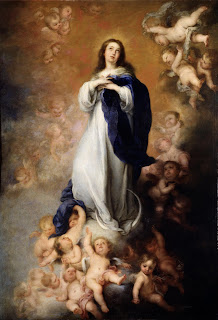In 1843, Michael Dulanty (1799-1886), originally of County Tipperary, Ireland, purchased two lots in Little Fort (now Waukegan) for the new church site. Dulanty was acting under the advice of Reverend J. Geurin, who was ministering in Shields Township to Catholics in Lake County. Interestingly, Dulanty was the best-known early tavern and hotel owner in Lake County. His first establishment, a stage relay station and tavern, was located on Green Bay Road between Highland Park and Highwood and was known as the Centerville Inn. In 1844, Dulanty sold this inn and his family's 120-acre homestead and moved to Little Fort, no doubt to take advantage of the booming business in the new county seat and to be closer to his parish's new church.
View of St. Mary's, the first Catholic Church in Waukegan, located at County and Water Streets, completed in 1847. The rectory for the priest (left) was built in 1849. Postcard circa 1898. Dunn Museum, 93.19.5.
Despite popular belief, Dulanty did not donate the two lots, but rather sold them to the Catholic bishop of Chicago for the establishment of a church on September 2, 1844. The land was located at the northwest corner of County and Water Streets. The land record of the transaction shows the name of the church as St. John's. All subsequent records list the church's name as St. Mary's.
The first clergyman sent from Chicago to minister to the new parish and to commence the construction of the church was Reverend B. McGorisk. The church was completed in 1847.
The first clergyman sent from Chicago to minister to the new parish and to commence the construction of the church was Reverend B. McGorisk. The church was completed in 1847.
Altar in the original St. Mary's Catholic Church constructed in 1847. Photo circa 1900.
Dunn Museum, Photo Collections.
The parish was renamed St. Bernard by 1854. In 1857 a school was established. The church and school were enlarged around 1859. In 1864, the parish was named Immaculate Conception.
Early pastors included Rev. Bernard McGarish, Rev. John Brady, Rev. Henry Coyle, who started the first parish school, and Rev. Michael Donohue, who enlarged the school. Rev. Edward A. Gavin was pastor for 55 years beginning in 1871. Rev. Francis J. Shea (1890-1969), pastor from 1926-1966, oversaw the construction of the parish's second church, which still stands at Grand Avenue and West Street. After Rev. Shea's retirement, Rev. Patrick Ronayne became pastor.
In 1927, plans were underway to build a new, larger church closer to the center of Waukegan's growth. Reverend Shea undertook the monumental task of choosing a site, getting the land purchased, and helping the parish raise $250,000 for the new church.
Newspaper article announcing permission from Cardinal Mundelein to break ground on the new church.
Independent Register, May 17, 1958. Newspapers.com.
Postcard of Immaculate Conception Church by the L.L. Cook Company, circa 1945.
Dunn Museum 92.27.240.1
Architect Joseph W. McCarthy (1884-1965) designed a Georgian Colonial structure closely resembling the style of the first church. The design was significant as it was considered very American and not typical for a Roman Catholic Church. The church's spire stands 158 feet and, at the time, was the tallest structure in Waukegan. The bell from the first church was placed in the new church's spire.
Postcard of Immaculate Conception Church, rectory and school, circa 1974.
Photo by Henry Brueckner for Color-View Inc. Dunn Museum 97.23.12.
The first Mass in the new church was celebrated by Rev. Francis Shea on December 8, 1929, the Feast of the Immaculate Conception. The church was dedicated on May 11, 1930, by George Cardinal Mundelein, Archbishop of Chicago. Cardinal Mundelein had taken a personal interest in Waukegan having one of the finest churches in the diocese.
Bartolomé Murillo's masterpiece, Immaculate Conception of the Venerable Ones (1678) (above). A mosaic version of this painting is hung above the altar at Immaculate Conception Catholic Church in Waukegan.
The interior of the Church shows the marble columns, crystal chandeliers, and, at the center, the large mosaic based on Murillo's Immaculate Conception of the Venerable Ones. Photo by Manuel Gonzalez, Dec 2019 (Google.com maps)
The school remained open at the original site until 1955 when a new school building was dedicated at Grand Avenue. View of the Grand Avenue school location (above), circa 1960.
Immaculate Conception, or I.C. as locals call it, was my parish and school growing up. I have very fond memories of my grade school years there, and going to Mass in what I considered the most beautiful church in the world.
In recent years, the church and school have been consolidated as the Most Blessed Trinity Catholic Churches of Immaculate Conception, Queen of Peace, Holy Family, and the Academy of Our Lady.
For church and school records contact:
Most Blessed Trinity Parish
450 Keller Avenue
Waukegan, IL 60085
www.mostblessedtrinityparish.org



















